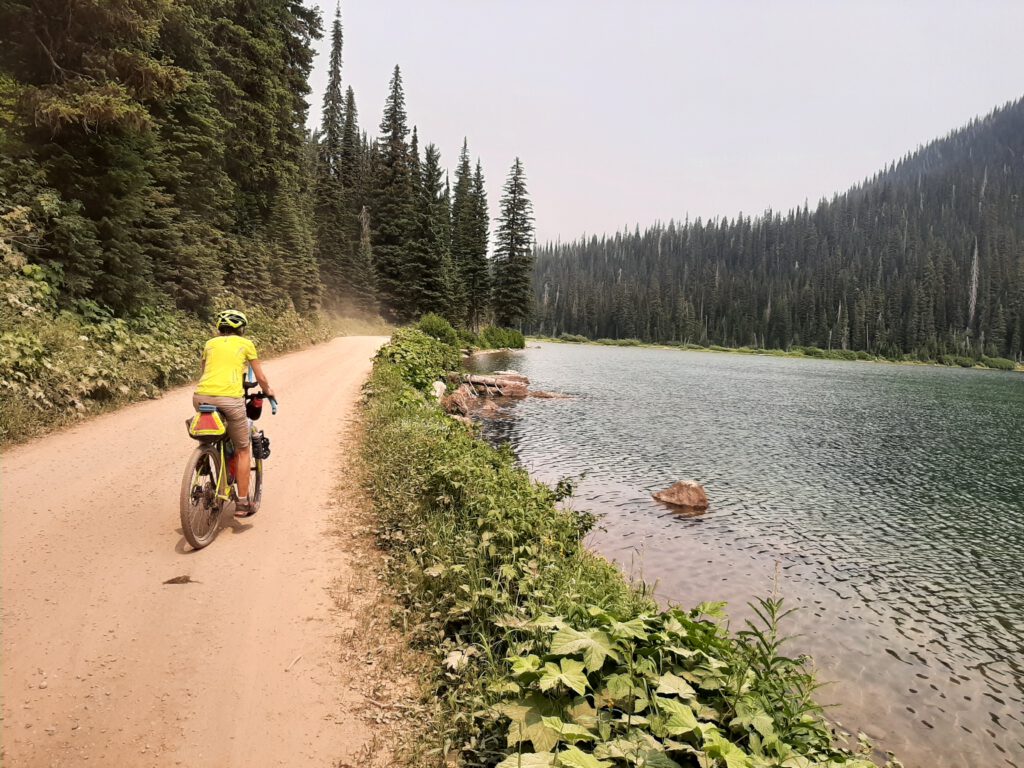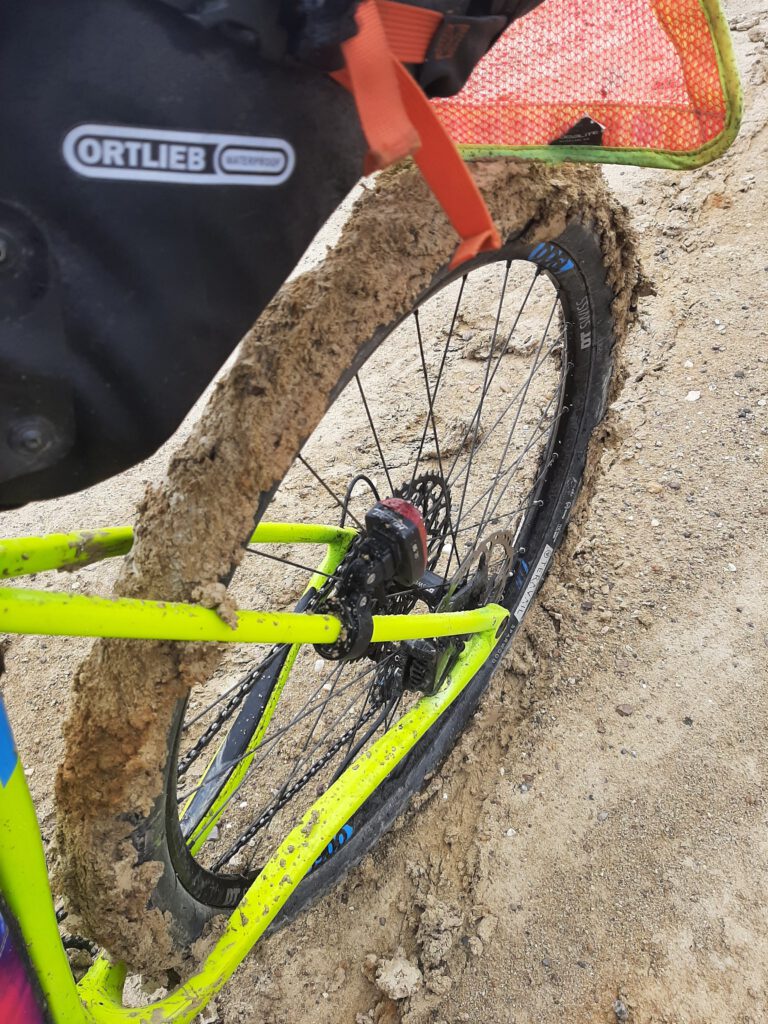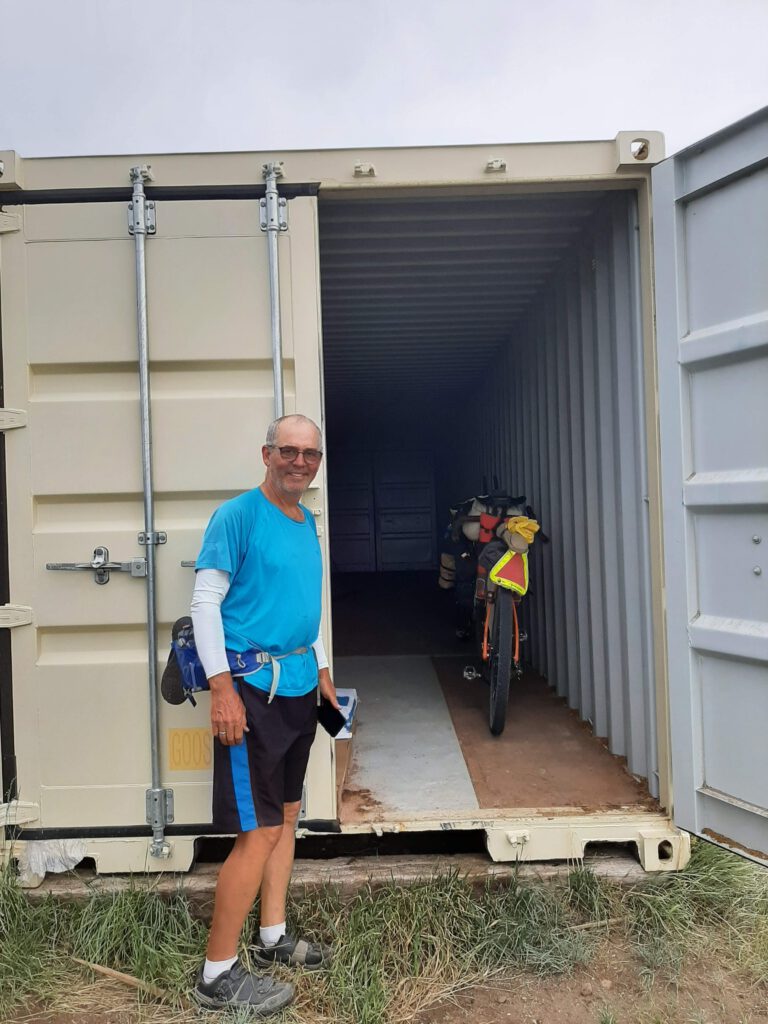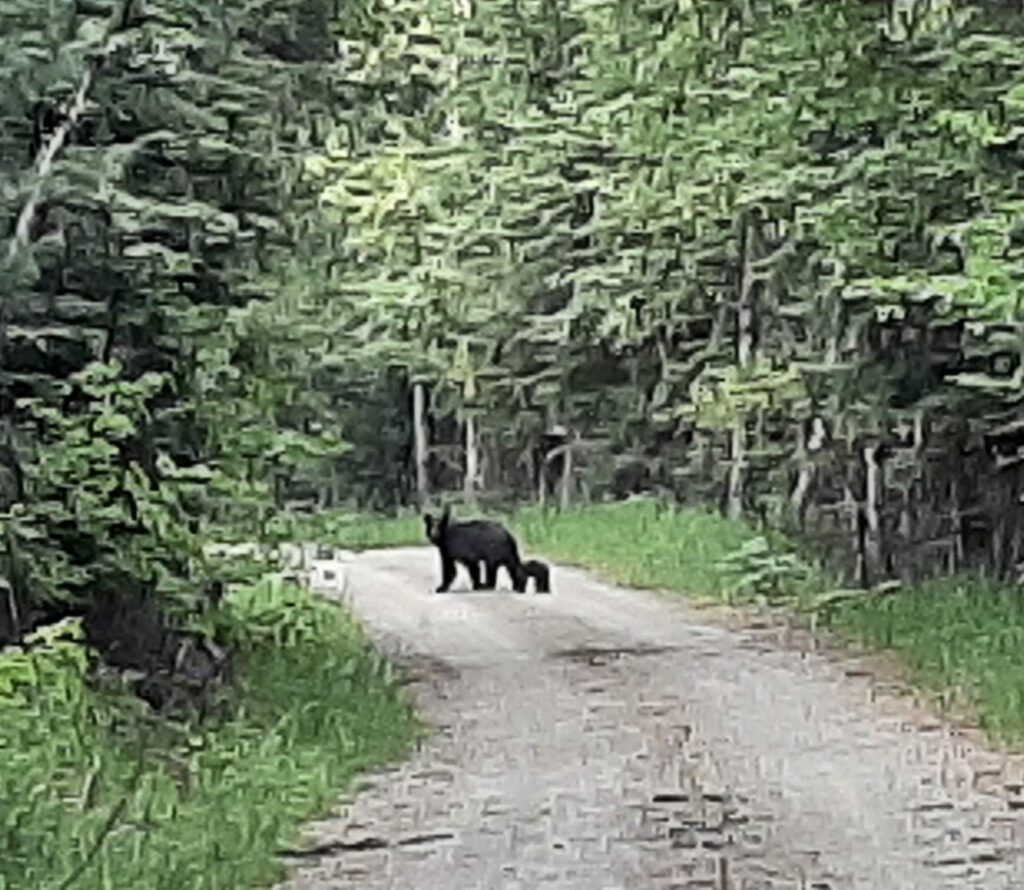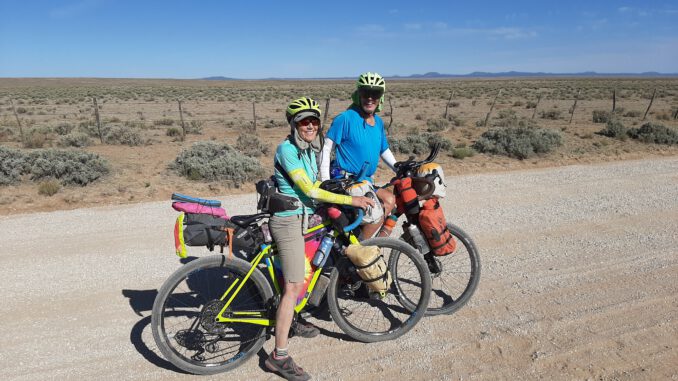
KEEP ON ROLLING
By Chris Wadsworth
The Great Divide Mountain Bike Route runs roughly 2,750 miles from the Mexico border to Banff, Alberta, in Canada. Along the way, bikers pass through New Mexico, Colorado, Wyoming, Idaho and Montana.
Riders climb a total of 150,000 feet of hills and mountains over the course of the trail. It would be daunting for a person of any age, but don’t tell that to Shauna and John Dickson of Ashburn’s Potomac Farms neighborhood.
A couple of fit-as-a-fiddle retirees, they rode 2,500 miles of the route from May to July 2021 in an epic journey that included 53 days of riding (plus eight days off), averaging 50 miles a day with 22 nights in a tent, 19 nights in a hotel and 10 nights in other places, like hostels, churches and once even a shipping container. They couldn’t go farther than the Canadian border due to pandemic restrictions.
“We had dozens of positive encounters with strangers on this trip – even offers of a bottle of water or words of encouragement – that convinced us that people are kind and good,” John Dickson said. “Sure, there are a few bad apples around, but 99% of the folks you meet are good people.”
Shauna, 67, a retired schoolteacher, and John, 66, a former construction engineer, have made bike riding a major part of their lives – on trips and around Ashburn. The duo shared some of their favorite memories from the cross-country trip with Ashburn Magazine. Here are excerpts from their “diary.”
THE GIFT
We set the alarm for 4 a.m. in order to make it to Horca, Colo., where we had heard about a food truck – the only food source in town – that was open until 5 p.m. The very rough, rocky New Mexico Jeep trails that day made for some very slow miles, including pushing our bikes – “hike-a-bike” – through the worst of it.
Crossing the highest point on the 2,500-mile route – Indiana Pass at 11,900 feet – didn’t speed things up either. At 4:45 p.m., we were still 11 miles away with the 10,200-foot-high Manga Pass between us and the food truck. We could call it a day and camp but, hoping against hope that food would still be available, Shauna said we were going for it. Of course, the food truck was long gone by the time we arrived in Horca at 6 p.m.
We were hungry, very tired, and after thinking about good food for dinner all day, not in the mood to cook our trail food of mashed potatoes. We also had no plan for a campsite that night.
But, hey, even in a small town like Horca (population 153), it shouldn’t be hard to find a place to pitch our tent. I spied an RV park, which is usually a good place to find a campsite. We rode into the RV park and stopped next to a man sitting in a small utility vehicle.
I asked where the RV park office was so we could pitch our tent for the night. He said that all these RVs were on individual private lots, but that there was a state campground a mile back from where we had just come. Uphill. My head dropped and my heart sank as we were not sure where we would find the mental or physical energy to pedal one more mile even if it were flat. But no matter how discouraged we were, the only option we had was to follow his directions back to the Elk Creek Campground.
So, we pedaled back, found the campground, used the privy and disposed of a day’s worth of trash while hungrily sniffing the burgers some other campers were grilling.
We were just about to pay $30 for a tent site at the campground when the guy from the RV park pulled up in his little car. His name was Patrick, and he said he rode over to check on us and to ask if we would like to stay in his travel trailer next to his cabin back at the RV park. “After you left, I just couldn’t get you out of my heart,” he said. The flushing toilet, hot shower and queen bed were luxurious.
CROSSING THE GREAT BASIN
As we entered the 132-mile stretch of the Great Basin on the Wyoming plains, we were fully aware of the challenges ahead. No houses, no services, no cars passing by and only one source of water – a creek about halfway through the basin. Nothing but wind, sky, rocks and a few wild horses. Not even a tree for shade.
With drinking water the limiting factor, we would have to cover the distance in two very long days. We figured since it was flat – if the infamous headwinds weren’t too strong, we could do it.
Day one, we made 72 miles, the highest daily mileage of the 1,200 miles we had ridden thus far. Feeling pretty confident, we looked at the rocky, uneven ground for an open, flat spot to set up the tent in the dry sand. It hadn’t rained in two months. The wind started to pick up and the sky got dark so we grabbed whatever we could off the bikes and retreated to the tent and zipped it tight.
The winds increased in strength, the lightning crashed and the thunder roared. We huddled as the tent bent sideways over us like it never had before – and we had been in plenty of other storms in that tent. Our concern that the tent poles would break at any moment or that the tent fabric would rip just about brought us to tears.
Eventually the winds slowed, and we ate a cold, unsatisfying “dinner” of granola bars while the rain continued. We fell asleep in a puddle of water that covered the entire space of the tent floor. All that rain that hadn’t come in two months fell on us in that one night and continued into the next morning.
At dawn, we ate a few cold items from our food bags and started off in the rain. Ten miles later, we came to a dead stop. The rain was ending, but now the wet dirt had turned to a peanut butter-like mud that collected so thickly on our tires that they couldn’t rotate. We got short pieces of sagebrush to scrape the mud off the tires then tried walking the bikes, but the mud became so thick on our shoes – big and clunky like Frankenstein’s monster shoes – that we couldn’t even walk. All we could do was sit and wait for the wind and sun to dry out the road.
But, Shauna, not one to sit around, suggested we try walking on and rolling our bikes over the shorter growths of sagebrush near the road. Success!
Eventually, the road became passable. By the afternoon, we were still only halfway to our needed mileage of 60 miles to make it out of the Great Basin and into the civilization of Atlantic City, Wyo. We arrived at 7:30 p.m. – muddy, tired, and hungry – at a cabin that a nice couple rents to bikers. We were more than grateful for the chili and cornbread they offered us, which gave us the sustenance needed to spend the next three hours cleaning up and spreading out all our gear and belongings around the wood stove to dry out in preparation to ride the next day.
Takeaway: You can do much harder things than you think you can.
THE SHIPPING CONTAINER
Crossed the Idaho/Montana border on the 4th of July. Cycled through 47 miles of isolated, desolate expanse. Nothing to see but open range with mountains all around in the distance. Wind started blowing. Dark skies headed our way.
John: “Better stop and get the tent up. We’re about to get hammered.” Shauna: “Let’s push on – maybe we’ll see some shelter.”
A few miles later, a white box-shaped object appeared in the distance. Shauna was thinking maybe we could get out of the wind and rain by getting on the non-windy side. As we got closer, we could see it was a 40×8 steel shipping container parked at a vacant corral. We stopped, just as the pouring rain started.
Lo and behold, one end was unlocked, so we opened it up to see it was completely empty, except for a couple bags of cattle feed, a pallet and a broom. Otherwise, it was as clean as could be. We hauled the bikes inside as we listened to the rain fall. Even though it was only 4 p.m., we decided this was a good time to cook our dinner of mashed potatoes as we waited out the storm and wondered if the rancher who owned the corral would come by to kick us out.
Post dinner, we realized we didn’t know if we could find a place to stay in Lima, Mont. – roughly 30 miles away – since we would get there so late on a holiday and would risk riding in the dark. Instead, we rolled out the sleeping bags right there in the shipping container – no need to put up the tent. We fell asleep by 6:30 p.m. while the rain pitter-pattered all night long. Heard one car roll by, but no one stopped to check out the trespassers. Proving once again, in spite of challenges, things usually work out.
THE BEARS
As we pedaled through Montana, the last state of the Great Divide Mountain Biking Route, our concern for bears was heightened since a few days prior, a female cyclist sleeping in her tent behind the post office in Ovando, Mont., had been killed by a grizzly.
As we rounded a bend on a dirt road one afternoon, about 60 yards away, was a big black bear. Quickly stopping, we immediately became concerned when the bear stood up on hind legs and started toward us.
Shauna’s thoughts were to get a picture, so she steadied her phone camera. John’s only thought was to grab the bear spray – we had read plenty of accounts of bikers meeting up with bears, so he was prepared and excited to really use the spray that had been carried on each of our handlebars.
Adrenaline was pumping. John unhinged the safety catch from the spray and had it at the ready, then looked up again at the bear. She was still walking toward us. We knew that a bear would not approach a human unless something was amiss. Just at the moment John was about to shoot off the spray, a cub broke out of the bushes next to the road and joined up with mama. Aha! Just a mama bear bluffing to protect her cub.
We carefully watched and waited as both mom and cub crossed the road and disappeared into the woods. Eventually, we timidly rode on – right past the spot where they had entered the trees, hoping the bears were not lying in wait for us. We were happy to be prepared for the worst, but happier not to have to face the worst.

